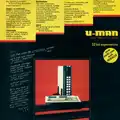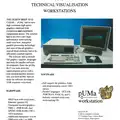U-Micro Advert - March 1986
From Personal Computer World
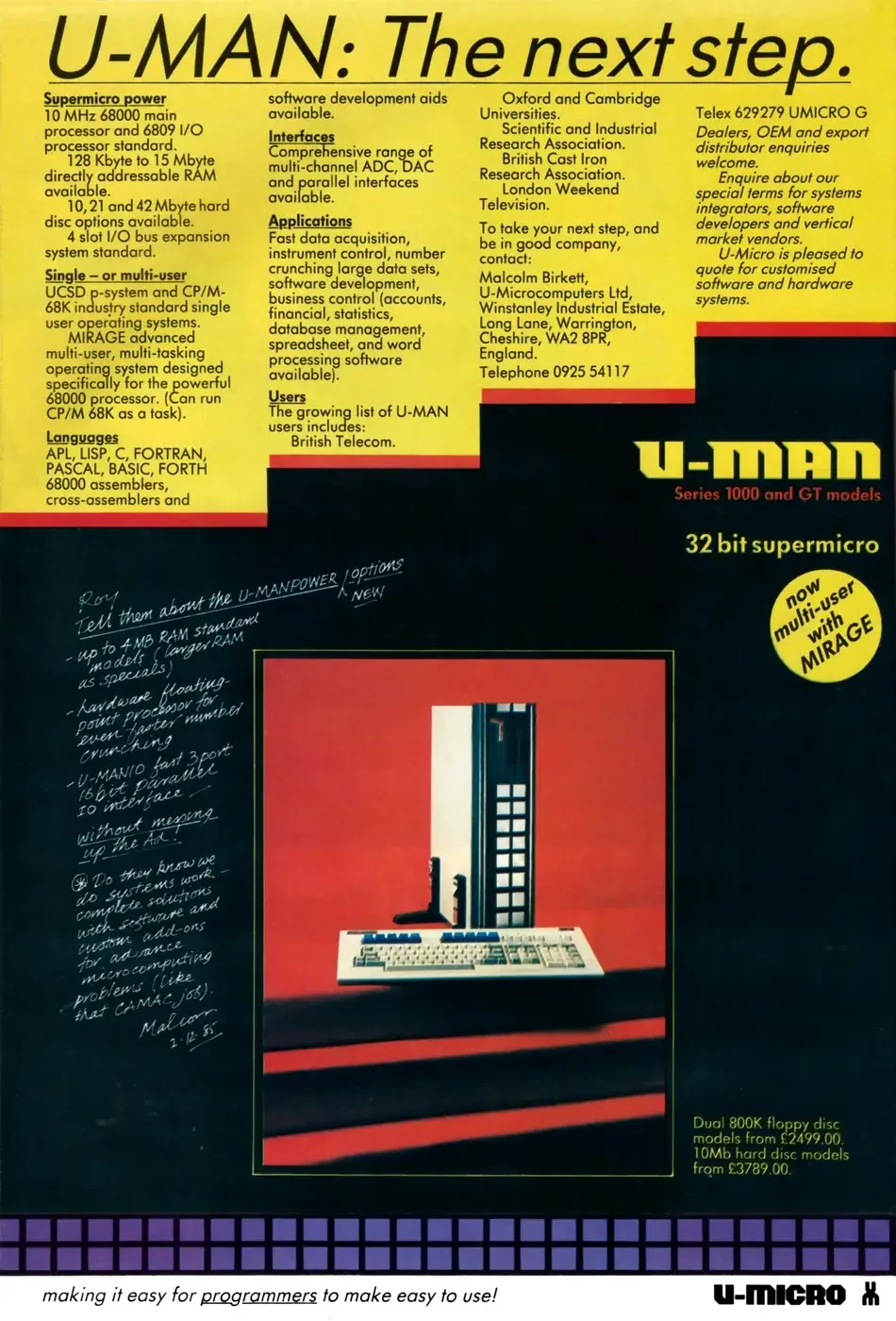
U-MAN: The next step
With customers as diverse as British Telecom, Oxford and Cambridge universities, the British Cast Iron Research Association and London Weekend Television, U-Microcomputers Limited of Warrington, Cheshire - headed up by Bill Unsworth - was a company that seemed to specialise in Motorola 68000 microcomputers - both as single- and multi-user systems - that were aimed specifically at developers, or rather programmers as they were known in the 70s and 80s.
It also supplied its own multi-user operating system in the form of Mirage, which as well as offering CP/M-68K as a "sub task" also supported as much memory as was available, unlike native CP/M - or even MS-DOS - which in its earlier versions topped out at 64K.
There were also rumours that U-Micro was interested in the Tripos OS which had been ported by British company Metacomco for use as the Commodore Amiga's operating system.
U-Micro, which had just released 2MB and 4MB memory expansion boards for the U-MAN micro, was in discussions with Metacomco, with Unsworth stating:
"We'd like to have a multi-tasking single-user system, and if Tripos does this, we'll go that way[1]".
Tripos, developed at the University of Cambridge in the 1960s, was built to be portable across machines, with the 68000 processor being shared between the Amiga and U-MAN making things potentially even more straightforward.
It was already found on DEC's PDP-11, Data General's Nova, IBM's Series 1, multiple Intel 8086-based machines as well as several other 68000 machines, where it had been said that a recent port of Tripos from one 68000 machine to another required a change of only two lines of code in the Tripos kernel[2].
As well as a 10MHz Motorola 68000, the U-MAN Series 1000 Supermicro also shipped with a Motorola 6809 - the same processor as found in the Dragon home computer but used just for I/O - plus up to 15MB of memory.
And thanks to its target software-developer market, it also came with an extensive range of languages for either CP/M or the optional UCSD p-system.
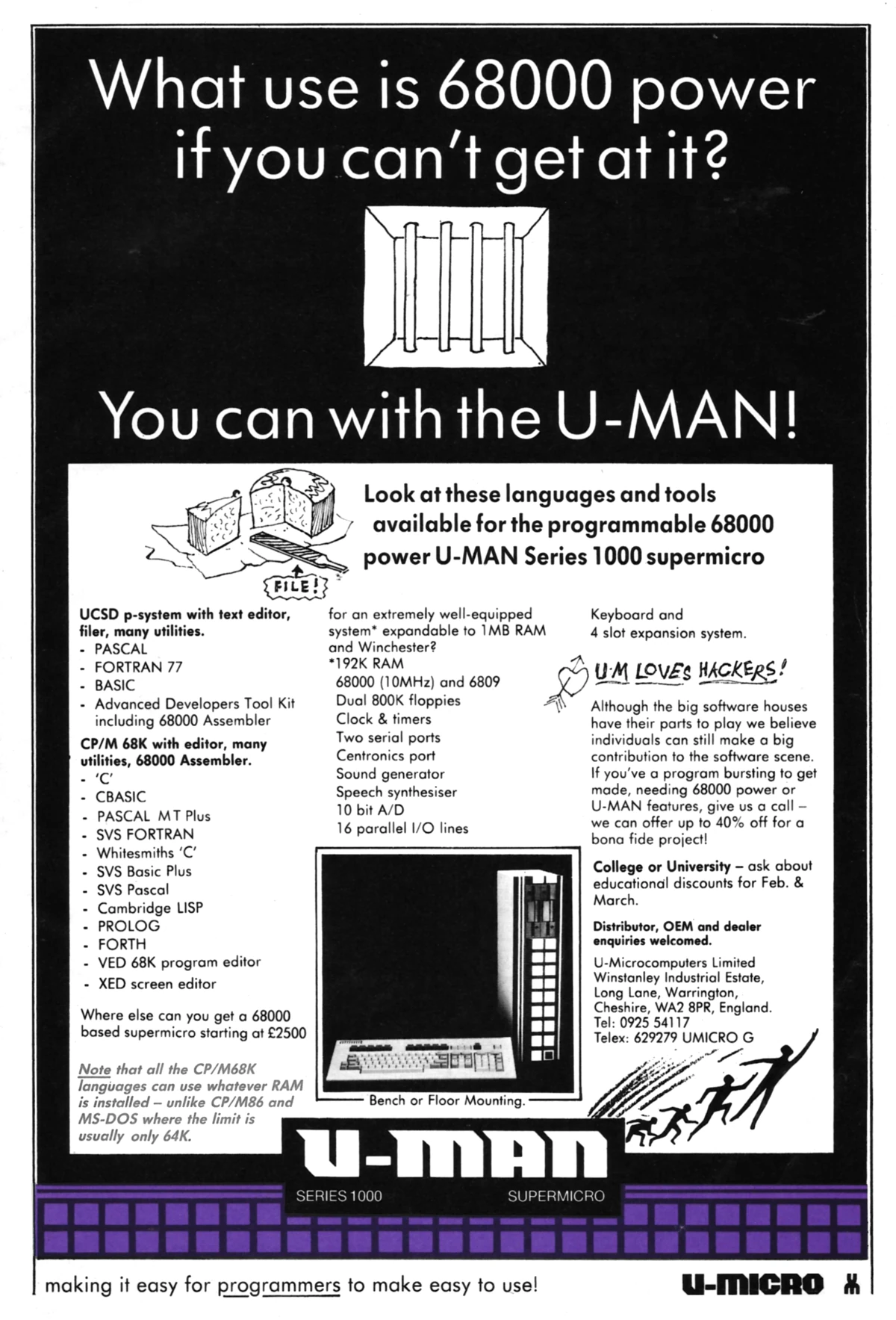
An earlier advert from the year before for the U-MAN system, showing the 40% discount on offer to programmers of "bona fide" projects.
A U-MAN system with a 10MB hard disk retailed from £3,789, which is around £14,300 in 2025 money. However, the company was offering discounts of up to 40% for programmers who could demonstrate that they were working on "bona fide projects".
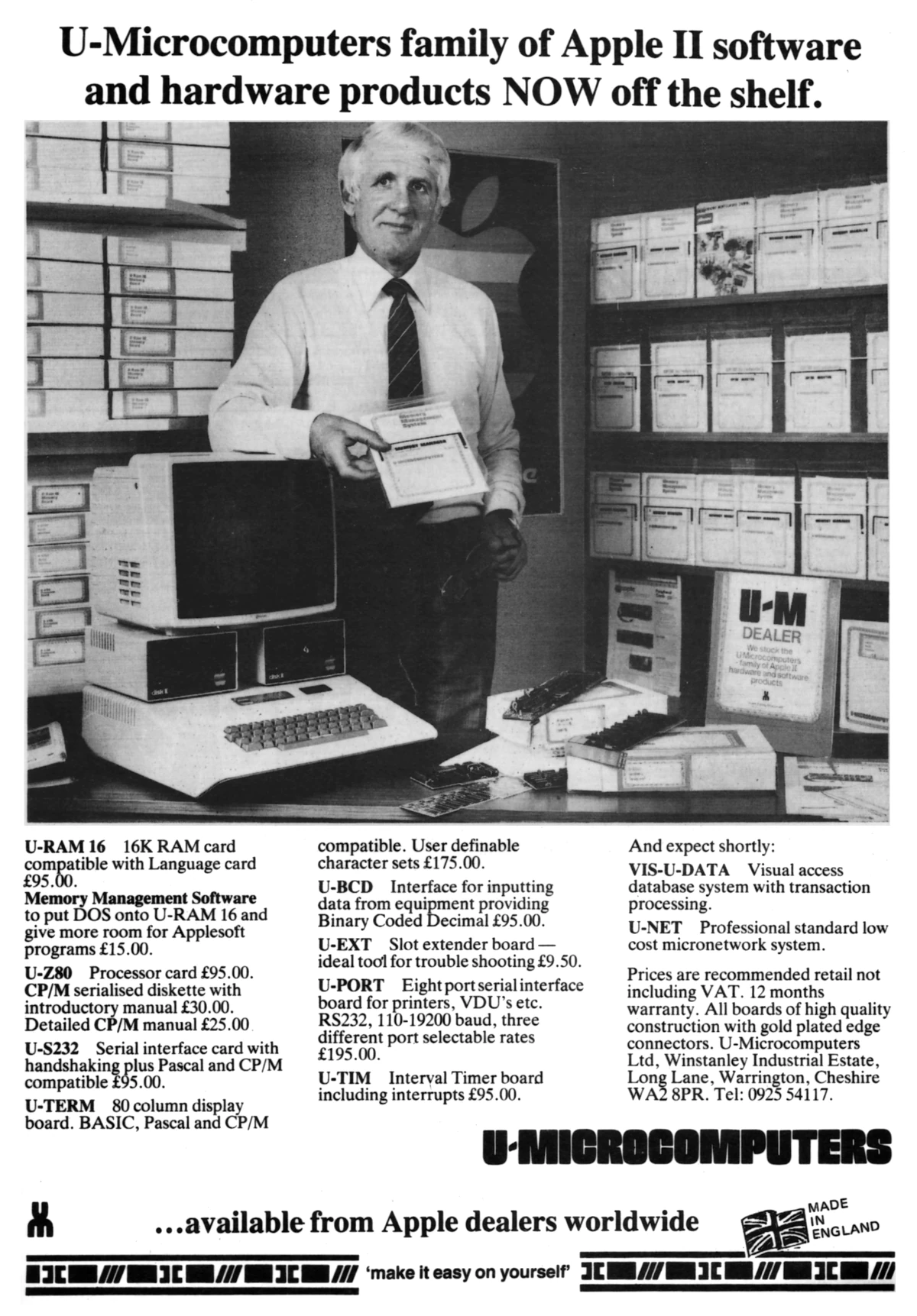
An early U-Microcomputers advert for the company's range of hardware boards and software for the Apple II. From Personal Computer World, December 1981
The company itself started out in the late 1970s as the factory-appointed distributor of Ohio Scientific's range of machines for the north and midlands regions of the UK. Products included the Superboard II and Ohio's larger C3B[3].
By the early 1980s it had become a manufacturer of software and hardware products for the Apple II. Hardware included boards like the U-Z80 second-processor card for £95, which is around £510 in 2025, or a £195 eight-port RS232 serial interface for plugging in either a lot of printers, or terminals.
Date created: 03 September 2024
Last updated: 25 July 2025
Hint: use left and right cursor keys to navigate between adverts.
Sources
Text and otherwise-uncredited photos © nosher.net 2025. Dollar/GBP conversions, where used, assume $1.50 to £1. "Now" prices are calculated dynamically using average RPI per year.
